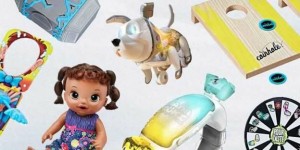We’re all aware that technology has changed the jobs many folks do. But a good many jobs disappeared long before high-tech invaded our lives. Take a look back and see how many jobs have vanished, or nearly vanished, from our lives. In a few cases, the same jobs may still exist today, but not by the names they were once known.
Badger
You would think farmers would sell their own produce during the Market Revolution, but nope! Badgers were the middlemen who would buy produce from farmers and then up-sell it to customers at the farmers’ market. The phrase, “to badger someone” may have come from a badger’s persistent sales tactics. Middlemen exist today, but the term “badgers” does not.
Billy Boy
In the ’50s and ’60s, Billy boys were young apprentices in training that would make tea for the other men at work. Seems strikingly similar to an intern grabbing a load of Starbucks, right? Some things never change.
Bowling Alley Pinsetter
If you loved to play games and needed some extra change, a pinsetter position at a bowling alley was right up your alley. The workers usually manually organized the pins for every game. The job was sent to the gutter once the mechanical pinsetter was invented by Gottfried Schmidt in 1936.
Catchpole
Deriving from the old english word “cace-” and the medieval Latin word “pullus” (a chick), the job title catchpole, a.k.a. a debt collector, was born. There are still debt and tax collectors today, but none that go by this old British title.
Chimney Sweep
This job has been around for hundreds of years, peaking during the Industrial Revolution and then falling into a steep decline after the adoption of electric and gas alternatives. Door-to-door chimney sweeps were called knellers. There still are a some chimney sweeps around, but the numbers are far below what they once were.
Clockwinder
A clockwinder did exactly what the name insinuates – wind clocks. It was only a matter of time before electric clockwinders, which required less maintenance and fewer repairs, were produced during the Industrial Revolution.
Computer
If you’ve seen the movie Hidden Figures, then you know what a computer is – and no, it’s not the technology that you’re using right now. Dating back to the early 17th century, computers, usually women, would calculate figures and crunch numbers all day long by hand. Yup, that’s right, no calculators allowed.
Eggler
We’re not going to lie, there’s nothing too eggsquisite about this job. The egg carton was invented in 1911, and Egglers began to sell bulk batches of eggs and sometimes switched it up with other poultry. At the end of the day, they couldn’t wing it with just eggs and poultry and added other food to the mix. Today, you can find these some of these folks at farmers’ markets.
Elevator Operator
Elevators didn’t always move with the simple push of a button. Back in the day, elevator operators were in charge of controlling everything from the doors and direction to the speed and capacity of the elevator car – a lot of layers, or should we say levels, to the position. In the ’50s, automatic elevators became more common and individuals had to push their own button.
Fuller
A fuller is a job that every parent can relate to – washing clothes. In the medieval era, fullers cleaned cloth to rid the textiles of oil and dirt. Afterward, the material was bound together to create clothing and other items.
Gandy Dancer
A gandy dancer actually has nothing to do with moving your hips. The title is slang for a railroad worker who maintained the tracks years before the work was done by machines. Some of them lived in converted boxcars that carried them along to where the work was to be done.
Gong Farmer
This job sure did stink! A gong farmer was someone who dug out and removed human waste from privies and cesspits during the 15th through 17th centuries. As modern sewage systems became more widespread, gong farmers disappeared.
Haberdasher
Back in the day, mothers would stop by a haberdasher to pick up sewing tools such as buttons, ribbons and zips. In 1818, Brooks Brothers became one of the first haberdashery establishments. The odd title got its name from haberdashery, a.k.a notions. Selling these little accessories only last so long and the position was wiped out when larger arts and crafts stores were launched.
Hacker
We wish we could tell you that hackers (computer hackers, that is) no longer exist, but unfortunately, these working men were more handy with trees than computers. Hackers were known as woodcutters and were axed due to technological advancements.
Hobbler
We assume a hobbler got its nickname in the mid-1800s from hobbling around and balancing on boat decks, but the real job was to tow river and canal boats. Similar deckhand positions still exist today, but they don’t go by hobblers.
Hush Shopkeeper
Sneaky hush shopkeepers got their name from keeping their liquor sales on the hush-hush during prohibition. Now, you can find a cocktail after a stressful day of work just about anywhere. Cheers!
Icemen
In the early 1800s, ice cutting was the common task of hand-sawing individual ice blocks from lakes and rivers to help store cold food throughout the winter. Then refrigerators were invented and the heavy-lifting job chilled out.
Knockerupper
Before the first mechanical alarm clock was invented in 1847, people hired knockeruppers to help shoot peas at their windows or tap the glass with long poles so they didn’t oversleep for work or during an afternoon snooze. Then the alarm was born, which we all now have a love-hate relationship with.
Lamplighter
A lamplighter in the late 1800s and early 1900s was precisely that – someone employed to light street lamps. Only a small number still exist today as the majority of street lighting is now electric.
Lector
We all can relate to needing a little distraction at work. Well, lectors were the source of entertainment back in the ’20s. They read news and literature out loud to employees, almost like an adult bedtime story without the bedtime. Although some pastors and educators are called lectors today, this type of lector was dismissed for most-likely being too distracting at work.
Leech Collector
In the 19th century, medicinal leeches were thought of as medical miracles that would suck toxic blood and disease from the body. The profession was stopped as even more disease began to spread, sucking the life out of the entire leech-collector operation.
Linotype Operator
Life without a backspace? We can’t even imagine, but former linotype operators definitely can. These highly skilled workers used the linotype, a hot metal typesetting system, to produce the daily newspaper in the late 1880s. Phototypesetting was created in the early 1960s and rapidly replaced all operator positions.
Log Drivers
No, this doesn’t just refer to the log ride at Six Flags. Up until the 1970s, log drivers helped move huge tree trunks from the forest to sawmills for construction purposes. The job didn’t make the cut as modern transportation progressed.
Lungs
Ironically, “lungs” were people employed to fan the fire in alchemist shops, primarily from the 14th, 15th and 16th centuries. Due to all the toxic materials in the labs, the worker’s actual lungs became blackened, and the job was put to rest.
Milkman
Every morning in the 1950s, like clockwork, the milkman would deliver bottles and jugs filled to the brim with milk. If you were lucky, sometimes he would even deliver other kitchen essentials like eggs and butter. With the rise of home refrigeration the milk stayed, but the profession expired.
Mudlarks
Typically an occupation dominated by those in extreme poverty, mudlarks scavenged through river mud in search of valuable items that were resold to the public. In 1904 this job was viewed as unlawful and was frowned upon.
Necessary Women
Necessary women were, well, definitely necessary before the colonial period. These women were known to empty chamber pots filled with waste throughout the day. It wasn’t until the end of the colonial period that indoor bathrooms became commonplace, and the job was flushed down the toilet.
Phrenologist
Phrenologists were considered ahead of the game because they were masters in “the only true science of mind,” or in other words, reading intelligence based on the shape of your head. This practice fizzled and eventually faded away in 1967.
Powdermonkey
During the Age of Sail, young men on warships who stuffed gunpowder in cannons were dubbed powdermonkeys. “Monkey” could’ve stemmed from monkeying around, but we’re not certain. As artillery innovation spurred, the powdermonkey position went kaboom!
Quarryman
We take things like heavy-duty construction equipment for granted these days. In the late 19th century, quarrymen rocked construction sites, mining stone that was used for other home-building purposes.
Ratteners
According to Mental Floss, in the Victorian Era, ratteners would capture and sell rats to pubs where they were eaten by dogs and played with for entertainment.
Redsmith
By the 1700s, American redsmiths were caught redhanded with loads of copper artifacts because that was their job! The term redsmith comes from the shiny bronze color of copper and there are still a handful present today. However, the job title “metalsmith” has become more commonplace.
Resurrectionist
In the 18th and 19th centuries, medical students needed bodies to practice on and resurrectionists came to the rescue – they would literally dig up dead corpses and sell them to medical schools. We’re not positive what ever happened to the occupation, but we rather suspect the job was banned due to ethics.
Signalman
A signalman helped manage multiple switches and levers by hand to ensure all trains were moving in the right direction. Once railways were computerized in the late ’60s, signalmen got the caboose!
Switchboard Operator
Switchboard operators connected long-distance calls and directed communication before digital exchange switched up the game. By the early 80’s the position became obsolete.
Town Crier
A town crier was in charge of screaming important news from street corners – a tradition dating back all the way to the 18th century. Their booming voices paraded down the streets with bold presence … and then radio, TV and Twitter happened.
Typist
Typists are still in-demand today, just without the typewriter. In the 1940s, typists were popular positions within the publishing, administrative and clerical industries. The role today has simply been upgraded with computers.

